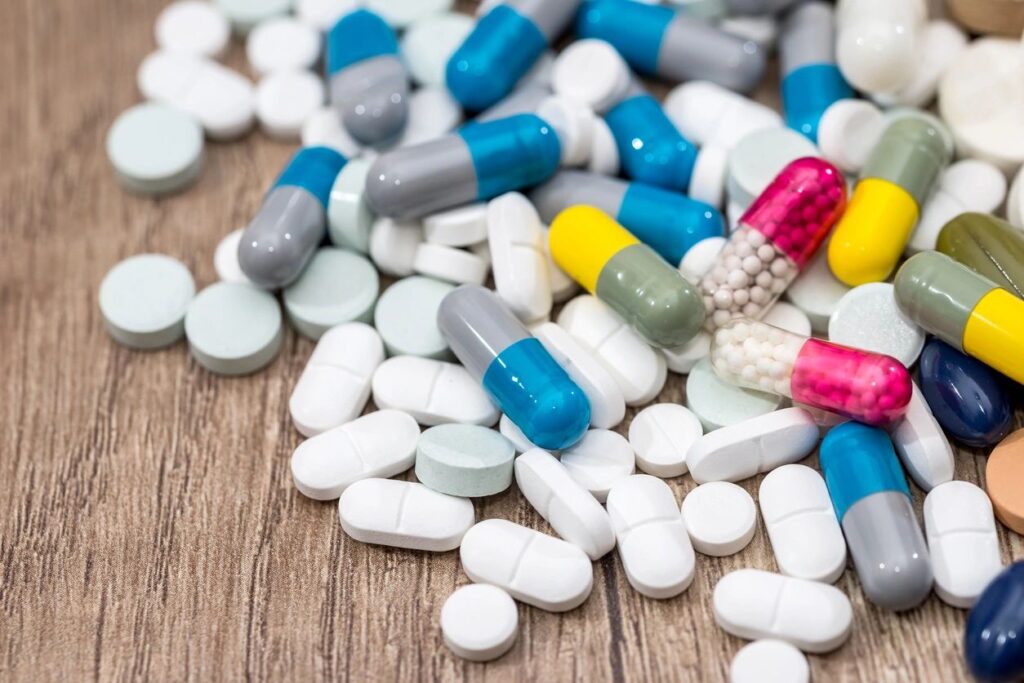Prescription Drug Discount Cards

What are they?
Prescription drug discount cards are cards that allow people to access discounted prices on prescription medications at participating pharmacies. These cards are usually provided by various companies, non-profit organizations, and even government programs.
The discounts provided by these cards can vary, but generally range from 10% to 80% off the retail price of a medication. The cards are free to use and can be obtained online, through a doctor’s office, or from a participating pharmacy.
However, it’s important to note that these discount cards are not insurance and cannot be used in combination with insurance. They also do not cover all medications, and the discounted price may not always be the lowest available.
Before using a prescription drug discount card, it’s important to compare prices across different pharmacies and to check for any restrictions or limitations associated with the card. It’s also a good idea to consult with a doctor or pharmacist to ensure that the medication is safe and appropriate for your needs.
Types of Prescription Drug Cards
There are different types of prescription drug discount cards available. Here are some examples:
- Manufacturer Discount Cards: These cards are provided by the manufacturers of prescription drugs to offer discounts on their own products. They are typically used for brand-name medications and may require meeting certain eligibility criteria.
- Pfizer RxPathways: Pfizer offers the RxPathways program, which provides free medications or significant discounts for individuals who meet certain eligibility criteria, such as being uninsured or underinsured. The program covers a wide range of medications, including those used to treat cancer, diabetes, and depression.
- GlaxoSmithKline Bridges to Access: GlaxoSmithKline’s Bridges to Access program offers free or discounted medications for individuals who meet certain eligibility criteria, such as having a low income or being uninsured. The program covers a range of medications, including those used to treat asthma, diabetes, and HIV.
- Novo Nordisk Instant Savings Card: Novo Nordisk offers an instant savings card that provides discounts on a range of medications, including insulin and diabetes medications. The card can be used at most pharmacies and can provide significant savings on out-of-pocket costs.
- AbbVie Patient Assistance Program: AbbVie offers a patient assistance program that provides free or discounted medications for individuals who meet certain eligibility criteria, such as having a low income or being uninsured. The program covers a range of medications, including those used to treat rheumatoid arthritis, psoriasis, and Crohn’s disease.
- Eli Lilly Lilly Cares: Eli Lilly’s Lilly Cares program provides free or discounted medications for individuals who meet certain eligibility criteria, such as having a low income or being uninsured. The program covers a range of medications, including those used to treat diabetes, depression, and cancer.
- It’s important to note that eligibility criteria and program availability may change, so it’s a good idea to check with the manufacturer’s website or call their customer service line to confirm eligibility and availability of these discount programs.Regenerate response
- Pharmacy Discount Cards: These cards are offered by pharmacy chains or independent pharmacies and offer discounts on prescription medications. These cards may be limited to specific pharmacies, and the discounts offered may vary depending on the pharmacy.
- GoodRx: GoodRx is one of the most popular pharmacy discount card programs, offering savings of up to 80% on prescription medications at more than 70,000 pharmacies nationwide. GoodRx can be used to compare prices at different pharmacies and provides coupons that can be used to save money on your medications.
- SingleCare: SingleCare is another popular pharmacy discount card program that provides discounts of up to 80% on prescription medications at more than 35,000 pharmacies nationwide. SingleCare also offers a free prescription savings card that can be used to save money on medications not covered by insurance.
- RxSaver: RxSaver is a pharmacy discount card program that provides savings of up to 80% on prescription medications at more than 60,000 pharmacies nationwide. RxSaver offers a free mobile app that allows you to compare prices at different pharmacies and provides coupons that can be used to save money on your medications.
- ScriptSave WellRx: ScriptSave WellRx is a pharmacy discount card program that provides savings of up to 80% on prescription medications at more than 65,000 pharmacies nationwide. ScriptSave WellRx offers a free mobile app that allows you to compare prices at different pharmacies and provides coupons that can be used to save money on your medications.
- FamilyWize: FamilyWize is a pharmacy discount card program that provides savings of up to 75% on prescription medications at more than 65,000 pharmacies nationwide. FamilyWize offers a free prescription savings card that can be used to save money on medications not covered by insurance.
- It’s important to note that prices may vary depending on the pharmacy and location, so it’s a good idea to compare prices at different pharmacies before using a pharmacy discount card to ensure you are getting the best deal. It’s also important to check with your pharmacist to make sure you understand any limitations or restrictions of the discount card, such as which medications are covered and what fees may apply.Regenerate response
- Non-profit Discount Cards: These cards are offered by non-profit organizations and charities to help low-income individuals afford their medications. They may have eligibility criteria based on income, age, or health status.
- NeedyMeds: NeedyMeds is a non-profit organization that provides information and resources for patients and healthcare providers on affordable medications and healthcare services. NeedyMeds offers a free drug discount card that can provide savings of up to 80% on prescription medications at more than 65,000 pharmacies nationwide.
- Partnership for Prescription Assistance: The Partnership for Prescription Assistance is a non-profit organization that helps patients who cannot afford their prescription medications. The organization provides a free online tool that can help you find patient assistance programs that may offer free or discounted medications.
- Rx Outreach: Rx Outreach is a non-profit mail-order pharmacy that provides affordable medications to people who cannot afford their prescription medications. Rx Outreach offers more than 500 medications at discounted prices and provides free shipping to your home.
- Together Rx Access: Together Rx Access is a non-profit organization that provides a prescription savings program for people who are uninsured or underinsured. The program provides savings on more than 300 medications and can be used at more than 65,000 pharmacies nationwide.
- Simplefill: Simplefill is a non-profit organization that helps people who have difficulty affording their prescription medications. Simplefill provides assistance with navigating patient assistance programs and offers a prescription savings program that provides savings on more than 1,500 medications.
- It’s important to note that eligibility criteria and program availability may change, so it’s a good idea to check with the non-profit organization’s website or call their customer service line to confirm eligibility and availability of these discount programs.Regenerate response
- Government Discount Cards: Some government programs offer discount cards to help people afford their medications. For example, the Medicare Prescription Drug Discount Card was a program offered by the US government to Medicare beneficiaries before the Medicare Part D program was implemented.
- Medicare Prescription Drug Plans: Medicare Prescription Drug Plans, also known as Medicare Part D, are offered by private insurance companies and provide prescription drug coverage for people who are eligible for Medicare. Medicare Part D plans provide discounts on prescription medications and offer coverage for a wide range of medications.
- Medicaid: Medicaid is a joint federal and state program that provides healthcare coverage for people with low incomes. Medicaid provides coverage for prescription medications, and some states offer additional pharmacy discount card programs for eligible individuals.
- Tricare: Tricare is a health care program for active duty and retired military members and their families. Tricare offers pharmacy benefits and provides a pharmacy discount card program for eligible beneficiaries.
- Veterans Affairs (VA) Prescription Refill and Tracking: The VA provides prescription medications to eligible veterans through its health care system. The VA offers a pharmacy discount card program for eligible veterans, as well as a prescription refill and tracking system that can help veterans manage their medications.
- 340B Drug Pricing Program: The 340B Drug Pricing Program is a federal program that provides discounted medications to eligible healthcare organizations and clinics that serve low-income and underserved populations.
- It’s important to note that eligibility criteria and program availability may vary, so it’s a good idea to check with the government agency or program’s website or call their customer service line to confirm eligibility and availability of these discount programs.Regenerate response
- Health Insurance Discount Cards: Some health insurance plans offer discount cards to their members to help reduce their out-of-pocket expenses on prescription medications.
- Blue Cross Blue Shield: Blue Cross Blue Shield offers a pharmacy discount card that provides savings on prescription medications for its members. The card can be used at more than 60,000 pharmacies nationwide and can provide savings of up to 75% on prescription medications.
- Aetna: Aetna offers a pharmacy discount card that provides savings on prescription medications for its members. The card can be used at more than 68,000 pharmacies nationwide and can provide savings of up to 50% on prescription medications.
- Cigna: Cigna offers a pharmacy discount card that provides savings on prescription medications for its members. The card can be used at more than 67,000 pharmacies nationwide and can provide savings of up to 55% on prescription medications.
- Humana: Humana offers a pharmacy discount card that provides savings on prescription medications for its members. The card can be used at more than 60,000 pharmacies nationwide and can provide savings of up to 80% on prescription medications.
- UnitedHealthcare: UnitedHealthcare offers a pharmacy discount card that provides savings on prescription medications for its members. The card can be used at more than 66,000 pharmacies nationwide and can provide savings of up to 75% on prescription medications.
- It’s important to note that eligibility criteria and program availability may vary, so it’s a good idea to check with your health insurance provider or visit their website to confirm eligibility and availability of these discount programs. Additionally, some health insurance plans may require you to use certain pharmacies or limit the medications that are covered, so it’s important to check your plan’s coverage details.

Prescription Drug Discount Cards Vs. Health Insurance
Prescription drug discount cards and health insurance are two different things that serve different purposes.
Prescription drug discount cards offer discounts on the retail price of prescription medications at participating pharmacies. These cards are not insurance, and they do not cover all medications or medical services. They can be useful for individuals who have to pay for their medications out of pocket, and who want to save money on their prescription drug costs.
Health insurance, on the other hand, is a form of financial protection that covers medical expenses, including prescription medications, in exchange for paying a premium. Health insurance plans can cover a wide range of medical services, including preventive care, emergency services, hospitalizations, and more. The level of coverage and out-of-pocket costs vary based on the specific insurance plan.
While prescription drug discount cards can be helpful in reducing the cost of medications, they cannot replace health insurance. Health insurance provides a broader range of coverage for medical expenses and can offer more financial protection in the event of a serious illness or injury.
It’s important to note that prescription drug discount cards cannot be used in conjunction with health insurance, and it’s always a good idea to review the details of your health insurance plan to understand what prescription drug coverage is included.
What to watch out for with Prescription Drug Discount Cards
While prescription drug discount cards can be a helpful way to save money on prescription medications, there are a few things to watch out for to ensure that you’re getting the best deal possible:
- Hidden fees: Some prescription drug discount cards may have hidden fees or charges that are not clearly disclosed. Before using a card, make sure you understand any fees or charges that may apply.
- Limited coverage: Prescription drug discount cards may only cover certain medications or may only be accepted at certain pharmacies. Make sure the card is accepted at the pharmacy you prefer to use and covers the medication you need.
- Eligibility criteria: Some prescription drug discount cards may have eligibility criteria, such as income limits or age restrictions. Make sure you meet the eligibility criteria before using the card.
- Discounts may not always be the lowest available: While prescription drug discount cards can offer significant savings, they may not always provide the lowest possible price. It’s a good idea to compare prices across different pharmacies and explore other cost-saving options, such as generic medications or patient assistance programs.
- Interaction with insurance: Prescription drug discount cards cannot be used in combination with insurance, and in some cases, using a discount card may actually result in a higher out-of-pocket cost than using insurance.
Before using a prescription drug discount card, it’s important to read the terms and conditions carefully and to ask questions if anything is unclear. It’s also a good idea to compare prices across different pharmacies and to consult with a doctor or pharmacist to ensure that the medication is safe and appropriate for your needs.

How to get best value from Prescription Drug Discount cards
Here are some tips on how to get the best value from prescription drug discount cards:
- Compare prices: Before using a prescription drug discount card, compare prices at different pharmacies to ensure you are getting the best deal. Some pharmacies may offer lower prices than others, even with a discount card.
- Use generic medications: In some cases, generic medications can be just as effective as brand-name medications and are often significantly less expensive. Ask your doctor or pharmacist if a generic version of your medication is available.
- Ask for a larger quantity: Some pharmacies offer lower prices for medications when you purchase a larger quantity. Ask your doctor to prescribe a larger quantity of medication if it is appropriate for your needs.
- Explore patient assistance programs: Many pharmaceutical companies offer patient assistance programs that provide free or low-cost medications to eligible individuals. Ask your doctor or pharmacist about these programs or visit the manufacturer’s website to learn more.
- Check for additional discounts: In addition to prescription drug discount cards, some pharmacies offer additional discounts to seniors, members of certain organizations, or individuals who pay with cash.
- Use the same pharmacy: If you find a pharmacy that offers consistently low prices, try to use that pharmacy for all of your prescriptions to take advantage of any additional discounts or savings they may offer.
- Be aware of limitations: Know the limitations of your prescription drug discount card, such as which medications are covered, what fees may apply, and whether there are any eligibility requirements.
By following these tips, you can maximize the value of your prescription drug discount card and save money on your prescription medications.
Need help with your Health Insurance? Schedule time to meet – https://calendly.com/mccdelivers/schedule-consultation
Note, this blog was written with the assistance of OpenAI.